Luminary Leaders: a lifeline for the corona virus crisis and the foundation of stress-management.
Take a minute to really take stock of all the changes that have happened in your world the last 8 weeks or so.
You’re home. You’re online. Working, considering, strategizing, wondering.
You’re caring for yourself or your family the best you can. Maybe it’s boring. You may have less to do, less people to connect with. And it’s feeling a bit like groundhog day. Or maybe you’re busier than ever- balancing online work and family life with no childcare reprieve.
And all the while there’s a surreal and severe pandemic happening across the globe. It’s so hard to wrap our minds around, isn’t it?
In fact, we’re all – collectively – in a time of crisis.
Embracing the Transition
A crisis, by definition, is a turning point.
It’s a transitional period of time between what was, and what will be.
This is quite a bizarre transition- a forced leaving of the known, for the unknown. And it’s very difficult for our brains to adjust. We’ve had to leave behind what was– in our work, in our schedule, in our expectations, in our ideas for the future. And we’re still waiting to be able to enter into what will be. We’re not there yet.
Uncertainty is so difficult for our human minds. Oh and by the way, let’s also add on a super-sized portion of stress and fear shall we? (Health concern + economic crisis + major lifestyle disruption = doesn’t get much more difficult than that.)
This, my friends, is why you’re hitting “the quarantine wall” every week or so.
What wall, you might ask?
Oh, just the emotional and energetic brick wall we all slam right into- seemingly out of the blue or for no clear reason- every several days (or weeks) or so.
You know when you’re at the wall when you can’t get a handle on your anxiety. Or you’re stuck mindlessly scrolling, lethargic, and unable to come up for air. You’re super annoyed and irritable. Or suddenly it’s urgent to have complete control over something that’s actually pretty inconsequential. Or you’re feeling headachy, foggy, and indecisive.
Or you feel like crawling into bed at 4pm because you can’t seem to get it together or have the energy to face it all.
You know, that wall.
When I hit the wall, I know that my brain is in serious need of rescue. It needs me to signal safety.
Your Brain Needs Integration
Here’s the task in front of all of us: embrace the chaos cactus of this transitional period of quarantine (and we can expect increased uncertainty as sheltering conditions begin to lift).
And then show up as your most resilient self as a human being and as a leader in this time of crisis.
How do you do this? By signaling safety to your nervous system and helping your brain become integrated.
When your brain is integrated, your behavior looks like this:
- Responsive
- Receptive
- Adaptive
- Flexible
- Curious
- Open to the world and relationships
- Resilient
- Balanced mentally and emotionally
- Coherent
- Energized
- Willing to try new things or make mistakes
Can I get a raise of hands here please? Who wants more of these traits to characterize our behavior during this time? (Of course we all do!)
Instead of responding to the world from a position of reactivity, where you’re at the mercy of your surroundings and emotions, brain integration helps you approach life with an attitude of receptivity, willingness, and an ability to choose how you want to respond to the various situations and challenges you’re confronted with- at work and at home.
Signaling Safety
There are a handful good ways to signal safety and influence brain integration. I’m going to describe two here today.
These two tools help to balance your nervous system and help get your brain working optimally- so you can navigate these strange times with more ease, agility and steadiness.
I teach these strategies to all of my clients. We teach brain integration from day one in the Luminary Leadership Workshop. And I practice this personally pretty much every day!
Doesn’t it seem like for something this important, that the strategies would be complicated and ninja-like? In fact, it’s quite the opposite. Our beautifully complex nervous system needs two rather simple things to signal safety.
- A paced breath.
- A sensory grounding activity.
Human beings have a critical need for the feeling of safety (physically, relationally and psychologically). When we don’t feel safe we shut down, don’t connect, don’t grow, don’t explore or create/innovate. The highest parts of our brains aren’t functioning.
When you learn how to signal to your brain that it’s safe, you influence your own physiology and empower yourself with the ability to flexibly choose how to navigate stress and periods of transition. Starting from an integrated foundation, we’re better able to make decisions, see our life or work situation with a more workable perspective, and apply creative problem solving as we navigate our choices through the stressor(s).
Paced Breathing
Paced breathing (also called coherent breathing) is something you can do anytime and anywhere to instantly stimulate your vagus nerve and lower stress responses associated with the sympathetic nervous system (“fight-or-flight” mechanisms). Try this: take a few deep breaths into your chest. Feel it’s rise and fall. Start to lengthen the amount of time it takes to complete your inhale, and try to match that with an equally long exhale. Now, take a couple of slow, deep breaths into your belly. Feel it’s rise and fall. Keep pacing your breath by lengthening each inhale and each exhale. Now, try to breath evenly into both the chest and the belly simultaneously over the next several breaths. Fill your chest and belly and all sides of your torso equally. INHALE for 1…2…3…4…5…6… pause. EXHALE for 6…5…4…3…2…1… pause. Finally, see if you can smooth out your breath. So it’s nearly a continuous, steady circle without beginning or end. Repeat this for at least 6 minutes to really start to influence your nervous system optimally.
Sensory Grounding
Sensory grounding is using all 5 of your senses to help you make contact with the present moment. We want to really be in the present moment with a sense of curiosity, openness and flexibility to influence brain integration. My favorite sensory grounding activity is what I call a “sensory walk.” It takes five minutes and most people really enjoy it (so if sitting and breathing doesn’t seem like your thing, try getting used to this strategy first). Set a one minute timer on your phone or watch. For this first minute, as you walk, try to immerse yourself in your sense of sight. Look all around you as you walk. Try to look at all of the details, colors and textures surrounding you. Look for beauty, for novelty, and for things that signal well-being to you. When the timer signals, set it again for one minute. For this second minute, as you walk, try to immerse yourself in your sense of hearing. Really tune into your surroundings, and focus your mind over and over again on all the things you can hear. Continue with the third minute, this time focusing on your sense of touch- pay attention to what can you feel (both inside of your body, and also, reach out to touch the natural world around you). The fourth minute, immerse yourself in your sense of smell. For the final minute, try to engage ALL of your senses as you move through the world. If you have a thermos of something yummy with you, take a sip to engage your sense of taste. Notice what it’s like to be fully alive, awake to your senses and connected to the present moment.
Self-leadership in Times of Stress
So Luminary, we’re all going to be experiencing the full range of the emotional and mental human experience as we move through the unknown in this crisis. We’re in that dark part of the transition. Where things are pretty murky and it doesn’t feel like there’s much stable ground to stand on. We’re leaving behind the familiar ways of doing things, and haven’t quite yet come out on the other side of this whole thing.
When we look back on this a few years from now, I hope we can say that we showed up to the challenges in ways we’re deeply proud of. And found an inner source of unprecedented strength and skillfulness. I hope we find we’ve become the leaders we most wanted, and most needed to be.
I know we can get through this, one step at a time, together. As Luminary Leaders we continually cultivate the ability to find joy and meaning, even in the midst of life’s challenges. When we learn to signal safety to our brains, we’re better able to cope with stress skillfully, feel grounded, understand ourselves more deeply, flexibly learn and adapt, and live with a renewed sense of purpose.
Give those brain integration strategies a try, and let us know what you think! And please, if you find this helpful, share this article with your friends and colleagues- so we can all weather this transitional stress with greater ease, agility and steadiness.
Cara (+ Amber)
Power up your days–starting now!
With FREE access to this potent guided practice.
The Morning Kickstart is a powerful practice that can help rewire your brain for more joy and contentment. And empower you to live into your most inspired life and leadership in small, doable steps every day.
Set your daily compass. Find a little inner stillness. Get closer to yourself. And cultivate the life and work you dream of.
Sign up to get the audio link sent directly to your inbox! And to get a monthly dose of our top Luminary tips, tools and inspiration.




